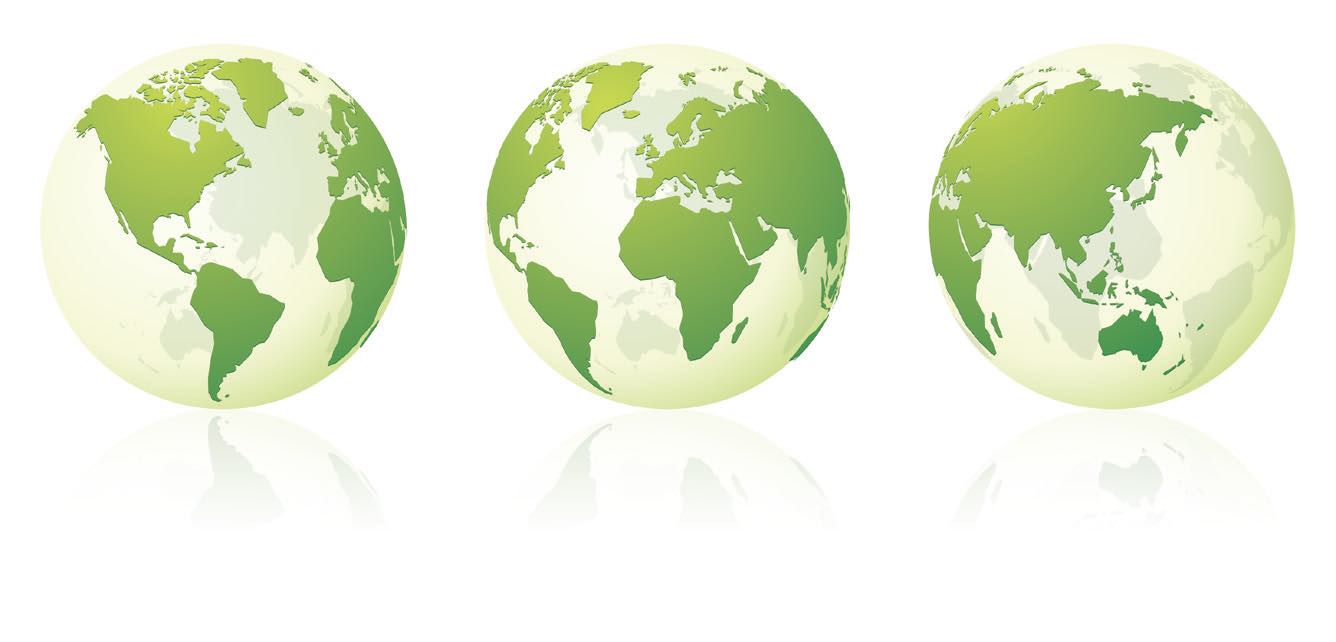This is our time
By Dr. Ryan D. Evans, STLE President | TLT President's Report May 2023
The STLE community should collaborate to create sustainability technologies for our world.

These international sustainability warnings are a call to action for the STLE community.
To my ear, the word sustainability is somewhat uninspiring. Sustaining is maintaining, like holding a musical note a little longer on a keyboard after releasing the key. My attitude about the term is evolving, though. According to reports from the International Energy Agency (
www.iea.org), scientists forecast that the current global carbon dioxide emissions trajectory may create a 2.5 C rise in global average temperatures by the year 2100. Therefore, “sustaining” human activities at lower emissions targets is hoped to reduce that temperature increase to only 1.5 C by 2100.
1 The United Nations defined “sustainability” in 1987 as meeting the human needs of the present without compromising the ability of future generations to meet their needs.
2 If one accepts the scientific position that our mankind’s current path for energy use is creating a risky climate path forward, then it is reasonable to make technical and policy changes to sustain our current environment and quality of life.
These international sustainability warnings are a call to action for the STLE community. This is our time. We can help save the day. We reflect that Peter Jost wrote a report highlighting the economic cost of friction, wear and corrosion in 1966 for the UK government. Now it is our turn. Today the STLE community should collaborate to create sustainability technologies for our world. I see five different opportunity spaces where the STLE community can make short- and long-term critical contributions toward these goals.
Renewable energy methods generate electricity without direct carbon dioxide emissions. The two most popular renewable energy technologies are wind turbines and solar photovoltaic installations.
Opportunity #1: Tribologists and lubrication engineers can improve the mechanical efficiency and durability of wind turbine drivetrains. While there have been remarkable improvements in the evolution of wind turbines over the past 15 years, new innovations in bearings, gearboxes and lubricants are needed to improve equipment and lower costs at scale.
Opportunity #2: Tribologists and lubrication engineers can improve the performance and robustness of solar photovoltaic panel tracking mechanisms. Tribologists often regard photovoltaic technologies as the realm of the materials scientist and electrical engineer, but that overlooks the need to accurately move and position the panels at the proper angles to capture as much sunlight as possible. These mechanical devices for moving panels are called trackers and often consist of lubricated, geared slew drives and other tribological joints and linkages. Tribologists should not ignore the need for accurate mechanical mirror positioning devices (e.g., two-axis heliostats) in concentrated solar power collectors, either.
Transportation technologies provide other sustainability opportunities for the STLE community. An enormous amount of energy is expended in supply chains to move food, materials and energy sources around the globe every day. While renewable energy efforts focus on power generation, the transportation sector is concerned with reducing the amount of energy expended in moving around goods.
Opportunity #3: Tribologists and lubrication engineers can optimize the energy efficiency of supply-chain critical transportation modes such as freight trains, cargo ships and cargo airplanes. A quick review of STLE literature over the past several decades reveals that tribologists were intentionally managing friction and wear in planes, trains and automobiles all along. New motor oils and formulations, new bearing designs and new tribological materials development are all in our comfort zone. Can we set some stretch goals, though? Can we rethink opportunities and energy efficiency in these legacy machines?
Opportunity #4: Tribologists and lubrication engineers should revisit mining and aggregate (solids processing, crushing and screening) equipment efficiency. A renewable electricity future requires battery, power electronics and magnetic motor innovations—all of which depend on rare earth and other mined metals as raw materials. Wheel-end final drives, diesel engines, electric motors, drilling bits, shaker screen systems and other applications come to mind for innovation and focus.
Lastly, human transportation should not be overlooked as we set goals for our STLE community.
Objective #5: Tribologists and lubrication engineers should continue to develop enabling fluid and hardware technologies for battery and fuel cell electric vehicles (EVs). STLE led this trend at the 2019 STLE Annual Meeting (Nashville, Tenn.) with our first special session on EVs. We have since held additional educational events and two fall STLE Tribology & Lubrication for E-Mobility Conferences (both held at Southwest Research Institute, San Antonio, Texas). STLE is preparing to host more EV content at the 2023 STLE Annual Meeting, May 21-25, in Long Beach, Calif., and the fall joint conferences: STLE Tribology Frontiers Conference and STLE Tribology & Lubrication for E-Mobility Conference, Nov. 12-15, in Cleveland, Ohio.
It is not often that the global scientific and political community calls so loudly for technical help, collaboration and innovation, but they are doing so now as it relates to sustainability. STLE community, this is our time. We can make wind turbines more efficient, durable and lower cost. We can enable affordable and dependable solar tracking mechanisms. We can continue to incrementally improve freight transportation equipment to keep global supply chains running. We can take a fresh look at mining equipment and mined materials processing hardware and lubrication to lower costs in extracting critical minerals from earth’s crust. STLE has already started leading the way toward efficient and robust EV drivetrain development. What a great time to be a tribologist and/or lubrication engineer! Let’s meet the call for sustainability together!
REFERENCES
1.
“World Energy Outlook 2022,” International Energy Agency, rev. November 2022,
www.iea.org.
2.
www.un.org
Dr. Ryan Evans is director of R&D at The Timken Co. in North Canton, Ohio. You can reach him at ryan.evans@timken.com.